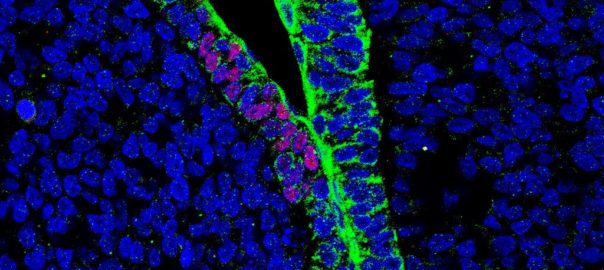Pig-human chimeras created using stem cells in a key step towards an unlimited source of organs and tissues for regenerative medicine

Regenerative medicine’s ongoing search for new sources of cells, tissues and organs has led to a major leap forward with the development of a human chimeric embryo.
A chimera refers to an organism that is genetically made of two different sets of genetic codes. Naturally, this can occur by the fusion of two fertilized eggs (or zygotes), usually in the case of two twins combining their cells very early on in embryonic development. The consequences of chimerism can be very diverse, but reportedly humans have been know to have two different blood types, and even a set of both genetically male and female cells and reproductive organs.
Researchers have also been able to create chimeras artificially for quite some time. By combining cells in very early development, when the cells still have the ability to become any type of cell in the body (pluripotency), an embryo can be artificially created that contains cells from two origins. While this procedure is not very exact, it has resulted in the creation of famed chimeric rhesus monkeys Roku and Hex, as well as various interspecies chimeras such as a goat-sheep (‘geep’) and the first chimeric human embryos 2003 (human-rabbit). Chimeras have proven very useful experimental tools for studying the development of various tissues and the genetic functions.
In the new study, published in Cell1 by Wu et al. of the Salk Institute for Biological Sciences in La Jolla, CA, the authors create a mouse-rat and human-pig chimera using a combination of CRISPR-Cas9 (see also: https://www.regenerativemedicinenow.com/first-human-embryos-genetically-modified-using-crispr-cas9-dna-editing-technique/) and pluripotent stem cells. First, in a mouse-rat model genes critical to the development of various organs (heart, eyes, and pancreas) were deleted from the mouse embryo using CRISPR and then pluripotent cells were used to fill in the gaps created. Subsequently, human pluripotent cells were combined with a pig embryo to create human-pig chimeras using pluripotent cells as a source. The embryos were implanted into a carrier pig and left to develop for 3-4 weeks after which the researchers were able to observe a mix of human and pig tissue in the young embryo. The embryos were not allowed to develop in maturity.
Senior scientist on the study, Juan Carlos Izpisua Belmonte, a professor in the Salk Institute’s Gene Expression Laboratory, is quoted saying “The ultimate goal is to grow functional and transplantable tissue or organs, but we are far away from that. This is an important first step.”
After all hurdles are overcome, the researchers hope to selectively delete genes for specific organs in the host animal, thereby leaving a gap to be filled by another source. Using human pluripotent stem cells, injected early in development, the animal would then grow an organ of human origin. These organs (for example kidneys, livers, hearts, lungs, pancreas and many more) would then be a source for organ transplantation. If successful, the technique would create an unlimited source of organs and would overcome the shortage currently faced in transplantation.
1Jun Wu, Aida Platero-Luengo, Masahiro Sakurai et al. Interspecies Chimerism with Mammalian Pluripotent Stem Cells. Cell, 2017 168, 473–486
http://www.cell.com/cell/pdf/S0092-8674(16)31752-4.pdf
Image credit: Human endodermal progenitors


